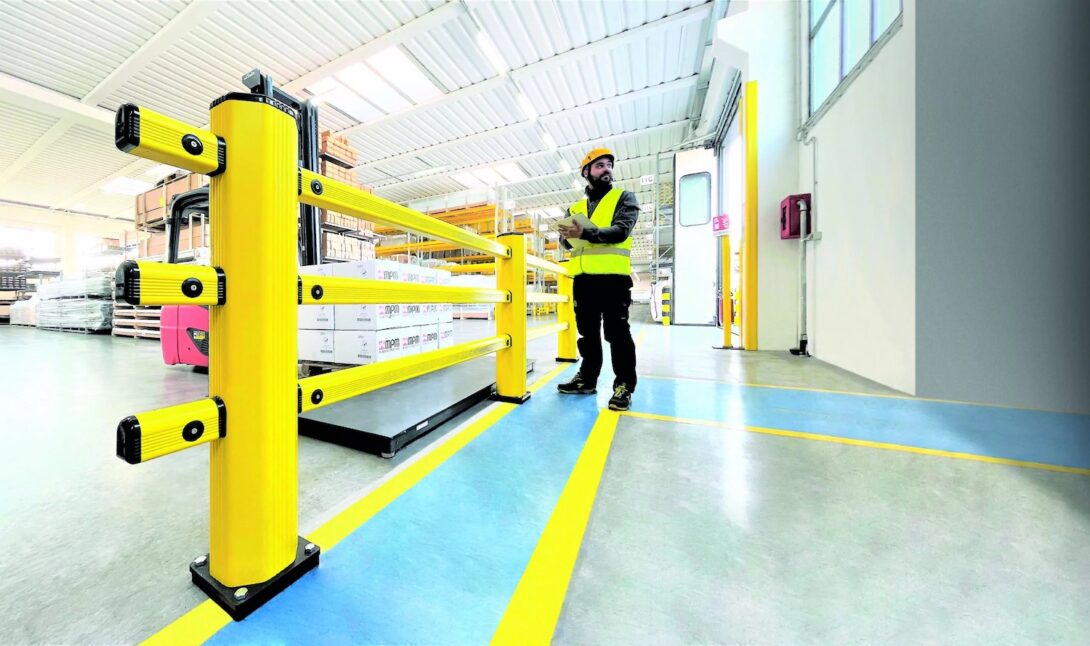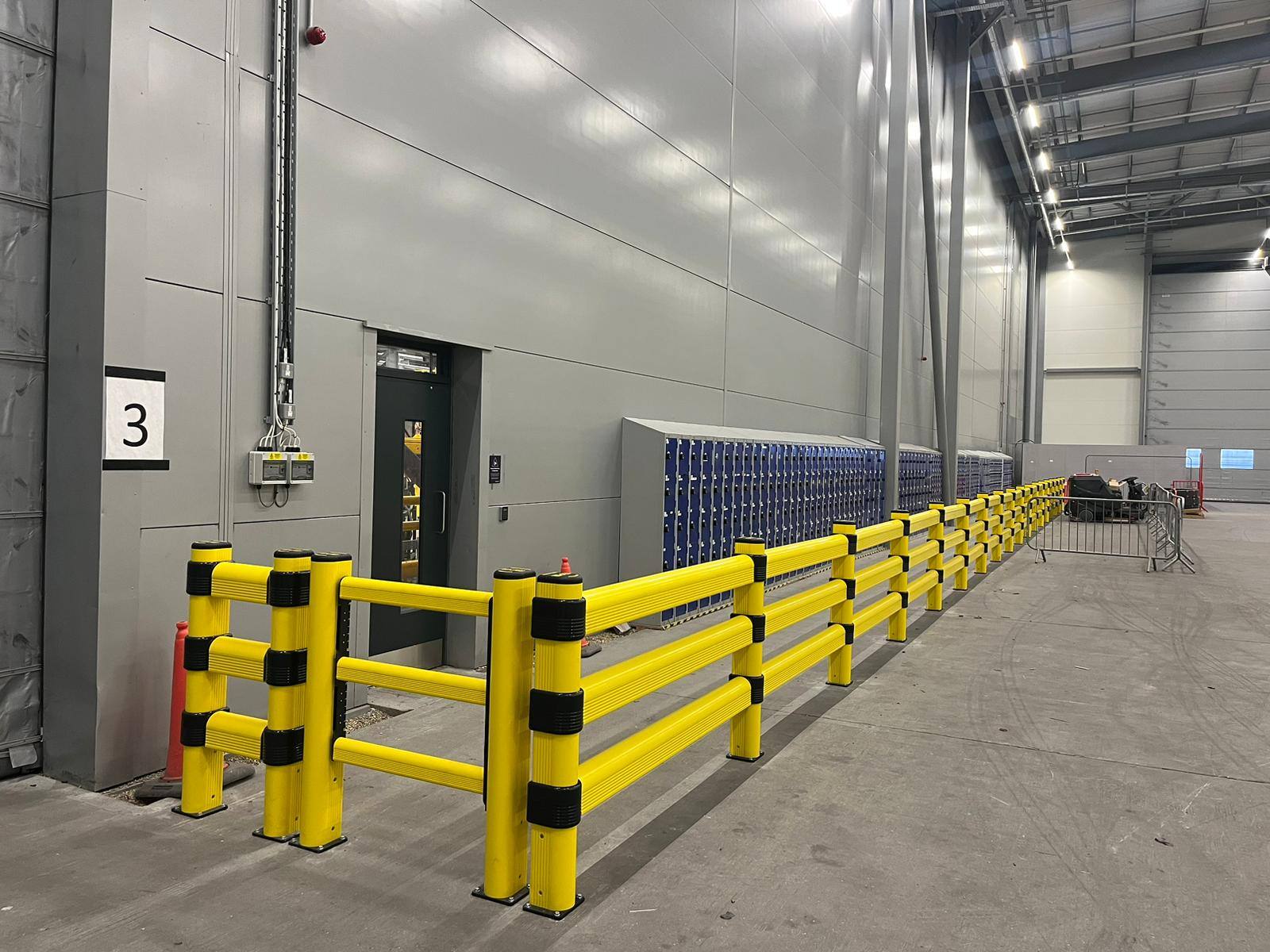What is the lifespan of flexible polymer barriers?
 By
Caleb Shaw
·
4 minute read
By
Caleb Shaw
·
4 minute read
Are you curious about the durability of flexible polymer barriers and how long they last in industrial settings? Look no further! In this blog post, we will explore the lifespan of these essential safety tools, from their material composition to maintenance tips. Join us as we dive into the world of flexible polymer barriers and uncover everything you need to know about maximizing their lifetime value. Let's get started!
What are flexible polymer barriers and where are they used?
Flexible polymer barriers are versatile safety tools made from durable plastic materials that can bend and absorb impact. They are commonly used in industrial settings, construction sites, warehouses, parking lots, and manufacturing facilities to create safe zones, guide traffic flow, and protect workers from potential hazards.
These barriers come in various shapes and sizes, such as barricades, bollards, guardrails, and safety cones. Their flexibility allows them to withstand impacts without breaking or causing damage to vehicles or structures. Additionally, their bright colors enhance visibility and serve as visual cues for drivers and pedestrians to navigate safely around restricted areas.
Whether it's controlling crowds at events or defining pedestrian walkways in busy environments, flexible polymer barriers play a crucial role in maintaining order and promoting workplace safety.
Material composition and Quality
When it comes to flexible polymer barriers, the material composition and quality play a crucial role in determining their lifespan. These barriers are typically made of high-quality plastics that are designed to withstand various environmental conditions and impacts.
The material used in manufacturing these barriers is carefully selected to ensure durability and longevity. High-grade polymers are often chosen for their strength, flexibility, and resistance to wear and tear.
Quality control measures during production also contribute to the overall performance of the barrier. Thorough testing ensures that each barrier meets industry standards for safety and reliability.
Choosing a reputable manufacturer known for producing top-quality flexible polymer barriers can make a significant difference in how long they last. Investing in barriers with superior material composition and quality upfront can result in a longer lifetime value for your industrial safety needs.
Environmental Conditions
Flexible polymer barriers are designed to withstand various environmental conditions, making them a versatile choice for industrial safety applications. Whether exposed to extreme heat, cold, moisture, or UV radiation, these barriers can maintain their structural integrity and effectiveness.
In hot climates, the barriers are engineered to resist warping or melting under high temperatures. Similarly, in freezing conditions, they remain flexible and durable without becoming brittle or cracking. This adaptability ensures consistent protection regardless of the weather.
Furthermore, the UV resistance of flexible polymer barriers prevents fading and degradation when exposed to sunlight over extended periods. This feature extends the lifetime value of the barriers by maintaining their visual appeal and functionality in outdoor settings.
Overall, when considering environmental factors in selecting safety barriers for your facility, flexible polymer options offer reliability and longevity in diverse conditions.
Frequency and Type of Impact
When considering the lifespan of flexible polymer barriers, it's crucial to factor in the frequency and type of impacts they endure.
The level of impact a barrier faces can vary depending on its location and purpose. For industrial safety barriers, constant exposure to heavy machinery or vehicular traffic may lead to more frequent collisions.
Different types of impacts, such as direct hits from forklifts or accidental bumps from equipment, can also affect the longevity of these barriers. The material composition plays a significant role in how well a barrier withstands such forces.
Regularly assessing the condition of your plastic barriers after any impact is essential. Even minor damages can weaken the overall integrity over time if left unchecked.
By understanding the frequency and type of impact your flexible polymer barriers encounter, you can better gauge their expected lifespan and ensure timely maintenance or replacement when needed.
Maintenance and Care
Maintenance and care are essential aspects to consider when it comes to prolonging the lifespan of flexible polymer barriers. Regular maintenance routines can help prevent premature wear and tear, ensuring that your barriers remain effective for a longer period.
Cleaning the barriers regularly with mild soap and water can help remove dirt, grime, and other contaminants that may compromise their integrity. Inspecting the barriers for any signs of damage or weakness is also crucial in identifying issues early on before they escalate.
In addition to cleaning and inspection, proper storage when not in use can also contribute to extending the lifespan of these barriers. Storing them away from direct sunlight or extreme temperatures can help prevent degradation of the material over time.
Regularly checking for loose fittings or fasteners and tightening them as needed can help maintain structural stability. Proper care and maintenance not only extend the lifespan of flexible polymer barriers but also ensure they continue to provide optimal safety protection in industrial settings.
How long do these barriers usually last?
Flexible polymer barriers are known for their durability and longevity in various industrial settings. The lifespan of these barriers can vary depending on multiple factors such as material composition, environmental conditions, frequency of impact, and maintenance protocols.
When properly cared for and maintained, flexible polymer barriers can last for years without needing replacement. Regular inspections to check for any signs of wear and tear are essential in extending the lifespan of these barriers.
In high-traffic areas where impacts are more frequent, the lifespan of flexible polymer barriers may be shorter compared to low-impact zones. It's crucial to consider the type and intensity of impacts that the barriers are exposed to when estimating their longevity.
Overall, investing in high-quality flexible polymer barriers upfront can significantly increase their lifetime value and provide long-term cost savings in terms of replacements or repairs.
Signs that it's time to replace your barriers
Being proactive in replacing your flexible polymer barriers is crucial for maintaining a safe and secure environment. Here are some signs that indicate it may be time to invest in new barriers:
1. Visible Damage: If you notice cracks, dents, or other visible damage on the barriers, this could compromise their effectiveness and structural integrity.
2. Fading Color: Over time, exposure to sunlight and harsh environmental conditions can cause the color of the barriers to fade. This not only affects aesthetics but also indicates potential deterioration of the material.
3. Reduced Flexibility: Flexible polymer barriers should maintain their flexibility to absorb impact effectively. If you notice stiffness or rigidity in the barriers, it may be a sign that they need replacement.
4. Uneven Surface: Any irregularities or deformities on the surface of the barrier can impede its ability to provide consistent protection against impacts.
5. Wear and Tear: Constant use and exposure to elements can lead to wear and tear on the barriers. Look out for signs of excessive wear such as fraying edges or worn-out sections.


.jpeg?width=284&height=378&name=WhatsApp%20Image%202024-06-14%20at%2007.40.29%20(1).jpeg)
By staying vigilant and monitoring these indicators, you can ensure that your industrial safety barriers continue to serve their purpose efficiently. Remember, investing in high-quality flexible polymer barriers not only enhances workplace safety but also offers long-term value for your initial investment.




